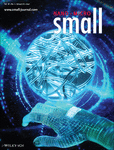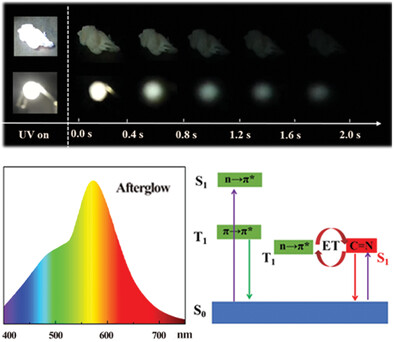Journal list menu
Export Citations
Download PDFs
Cover Picture
Fatigue Resistant Aerogel/Hydrogel Nanostructured Hybrid for Highly Sensitive and Ultrabroad Pressure Sensing (Small 1/2022)
- First Published: 05 January 2022

High-Resolution Sensing
In article number 2104706, Jingbin Zeng, Zifeng Yan, Yadong Yin, and co-workers fabricate a hybrid pressure aerogel/hydrogel sensor by integrating a polypyrrole nanotube-structured aerogel into a polyacrylamide hydrogel. With high stretchability and self-healing property, the hybrid polymer sensor exhibits stable performance in high-resolution sensing of a wide range of pressure from human physiological signals to significant stress caused by car rolling.
Inside Front Cover
A Microfluidic Device to Fabricate One-Step Cell Bead-Laden Hydrogel Struts for Tissue Engineering (Small 1/2022)
- First Published: 05 January 2022

Tissue Engineering
In article number 2106487, Dongryeol Ryu, GeunHyung Kim, and co-workers propose a microfluidic device with cell-laden methacrylated gelatin bioink and alginate as a matrix hydrogel to fabricate a functional hybrid structure, which is obtained using a one-step process, laden with cell-aggregated microbeads for tissue engineering applications. The cell-bead-laden hybrid struts exhibit outstanding cellular activities compared to conventionally bioprinted cell-laden struts.
Inside Back Cover
Matching Charge Extraction Contact for Infrared PbS Colloidal Quantum Dot Solar Cells (Small 1/2022)
- First Published: 05 January 2022
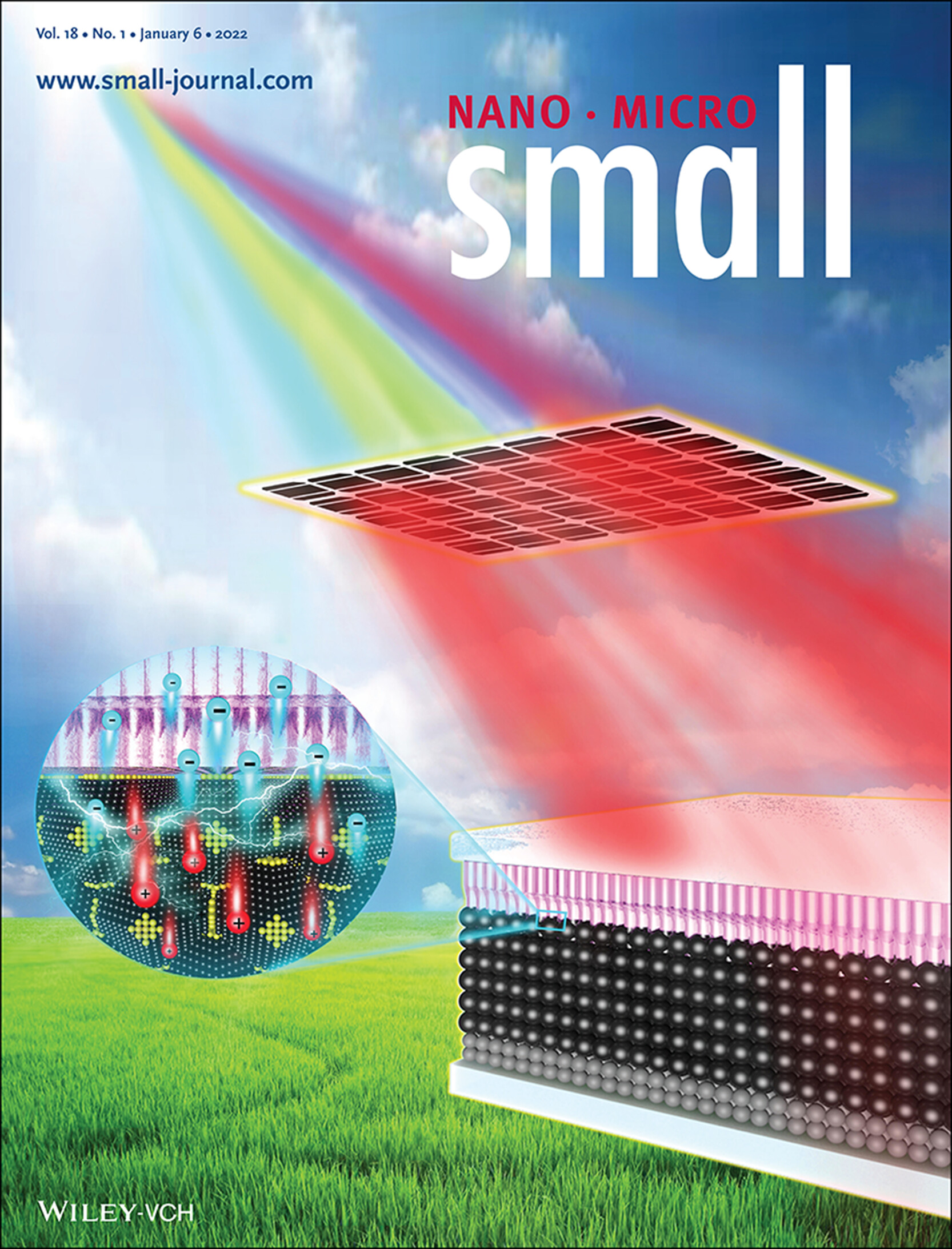
Infrared Solar Cells
PbS colloidal quantum dot infrared solar cells can supplement silicon or perovskite solar cells. The energy level evolution of large size PbS quantum dots causes the authors to reconsider the matching charge extraction contacts. In article number 2105495, Haisheng Song and co-workers develop a sputtered ZnO-based champion device which obtains a certified power conversion efficiency of over 10%, and the 1100 nm filtered efficiency achieves 1.23%.
Back Cover
Promoted NIR-II Fluorescence by Heteroatom-Inserted Rigid-Planar Cores for Monitoring Cell Therapy of Acute Lung Injury (Small 1/2022)
- First Published: 05 January 2022
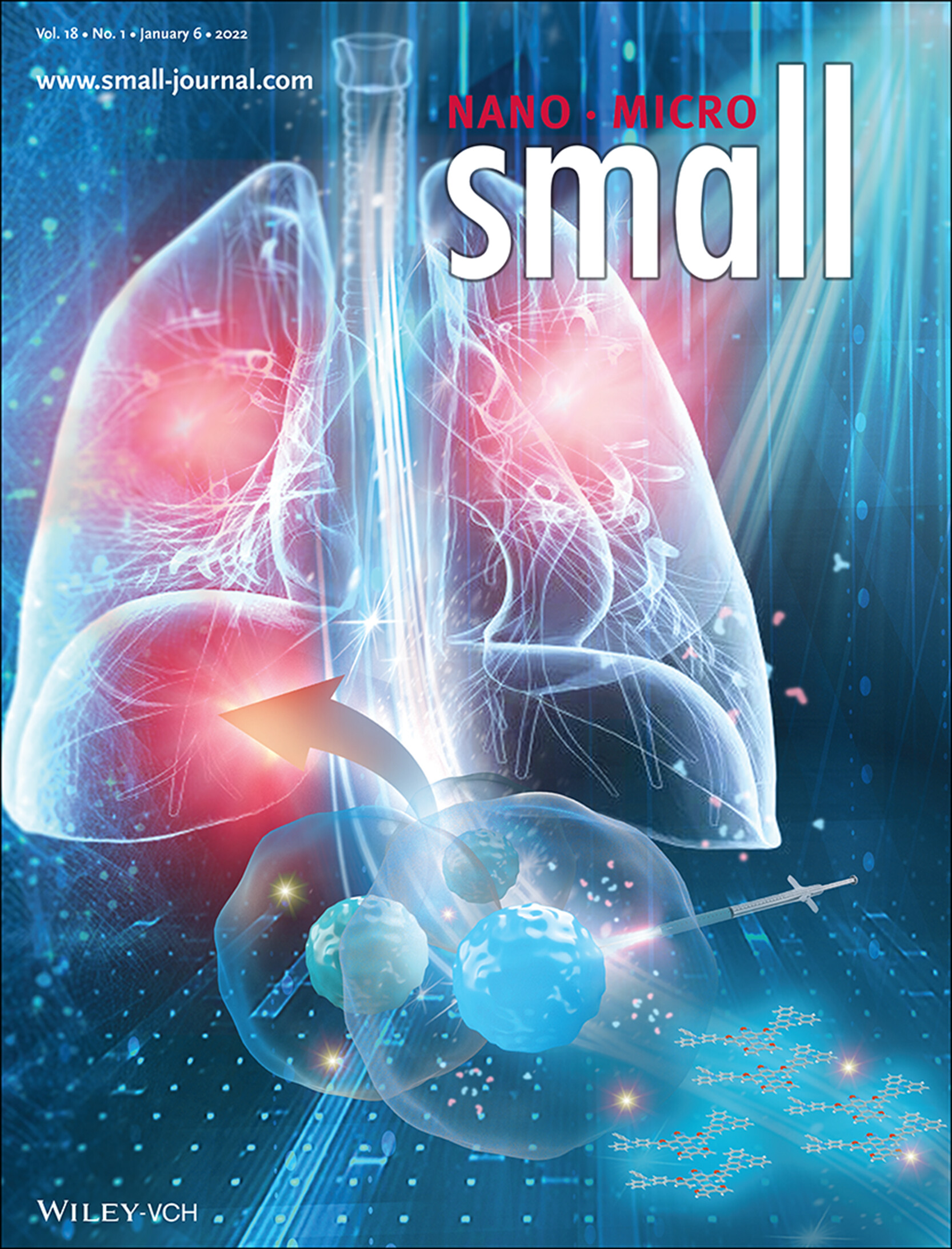
NIR-IIa Cell Tracker
In article number 2105362, Jen-Shyang Ni, Kai Li, and co-workers design a series of NIR-II fluorophores through a heteroatom-inserted electron delocalization strategy, which is used as a NIR-IIa cell tracker to dynamically track the homing of transplanted stem cells in the acute lung injury model.
Masthead
Correction
Porous Au–Ag Nanoparticles from Galvanic Replacement Applied as Single-Particle SERS Probe for Quantitative Monitoring
- First Published: 05 January 2022
Editorial
A Small Adjustment: Checklists to Standardize Data Reporting
- First Published: 05 January 2022
Reviews
Nanomaterials in Smart Packaging Applications: A Review
- First Published: 12 September 2021
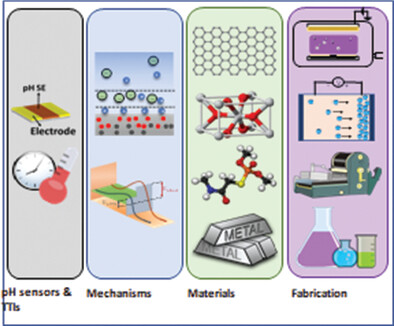
The recent progress, importance, and future needs of pH sensors and time-temperature indicators (TTIs) for smart sensors in food packaging applications is reviewed. The mechanisms for sensing pH and temperature, the advantages and limitations of the materials and fabrication processes employed in making the sensors, and solutions to make them more safe, useful, and effective are discussed.
Key Factors for Binders to Enhance the Electrochemical Performance of Silicon Anodes through Molecular Design
- First Published: 04 September 2021
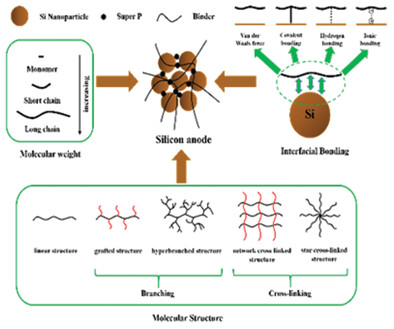
In this review, several key factors for binders to enhance the electrochemical performance of silicon anodes are summarized. In addition, some commonly used modification methods for binders are also provided to control these influencing factors. Finally, to overcome the existing problems and challenges of binders, several possible development directions of binders are suggested.
Recent Advances in Plasmonic Photocatalysis Based on TiO2 and Noble Metal Nanoparticles for Energy Conversion, Environmental Remediation, and Organic Synthesis
- First Published: 15 August 2021

While photocatalysis has been focused on TiO2-based materials, the harvesting of plasmonic effects has emerged as an efficient strategy to enhance photocatalytic performances. Therefore, the combination of TiO2 with plasmonic nanoparticles has attracted massive attention. This review covers the fundamentals, recent advances, and representative examples, and provides future guidelines in the field of TiO2-based plasmonic photocatalysis toward various important molecular transformations.
Recent Advances in Blue Perovskite Quantum Dots for Light-Emitting Diodes
- First Published: 28 October 2021
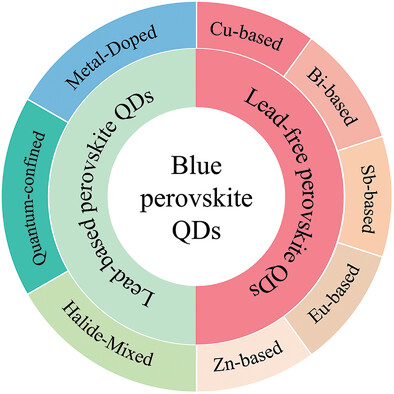
In this review, the various strategies for blue perovskite quantum dots (PQDs) based on mixed-halide PQDs, quantum-confined all-bromide PQDs, metal-doped PQDs, and lead-free PQDs are focused on. Then, the recent progress of electroluminescence and down-converted LEDs based on blue PQDs is summarized, which provides valuable guidance to design and create efficient blue LEDs.
Recent Advances on Host–Guest Material Systems toward Organic Room Temperature Phosphorescence
- First Published: 01 November 2021
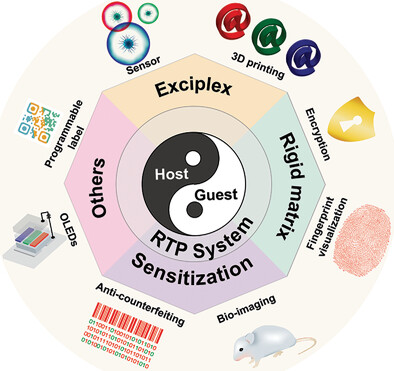
Host–guest room temperature phosphorescence (RTP) materials have revolutionized the understandings of organic optoelectronics, leading to significant advances in constructing advanced applications. Explanative account is provided for systematizing the knowledge of host–guest RTP materials, with an emphasis on construction strategies, molecular structures and properties, and diverse applications.
Frontispiece
Regulating Steric Hindrance in Redox-Active Porous Organic Frameworks Achieves Enhanced Sodium Storage Performance (Small 1/2022)
- First Published: 05 January 2022
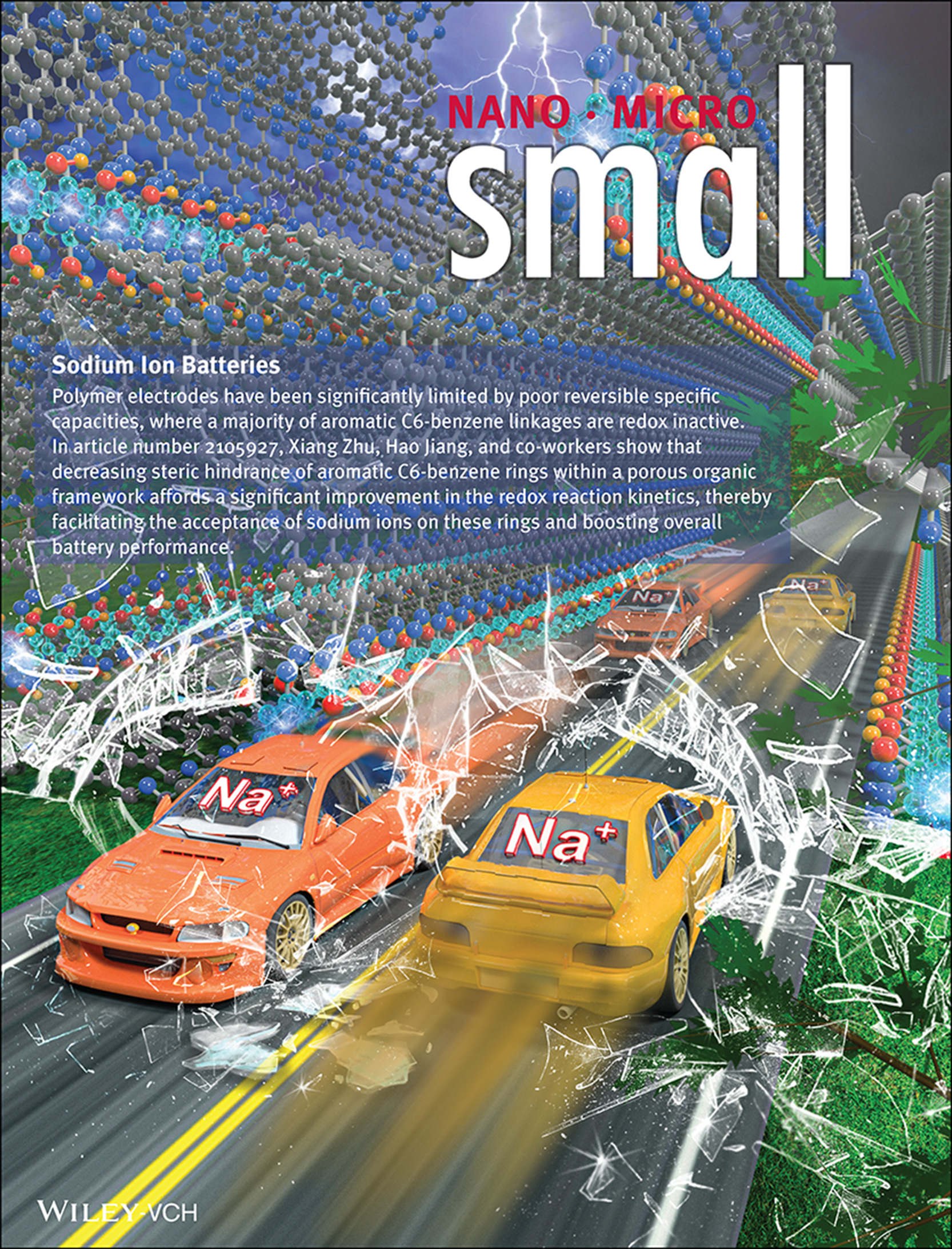
Sodium Ion Batteries
Polymer electrodes have been significantly limited by poor reversible specific capacities, where a majority of aromatic C6-benzene linkages are redox inactive. In article number 2105927, Xiang Zhu, Hao Jiang, and co-workers show that decreasing steric hindrance of aromatic C6-benzene rings within a porous organic framework affords a significant improvement in the redox reaction kinetics, thereby facilitating the acceptance of sodium ions on these rings and boosting overall battery performance.
Research Articles
Regulating Steric Hindrance in Redox-Active Porous Organic Frameworks Achieves Enhanced Sodium Storage Performance
- First Published: 04 December 2021
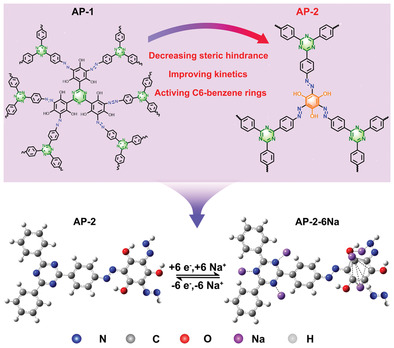
Decreasing steric hindrance of aromatic C6-benzene rings within a porous organic framework affords a significant improvement in the redox reaction kinetics, thereby facilitating the acceptance of sodium ions on these rings and boosting overall sodium ion batteries (SIBs) performance. This study may open up new possibilities for the rational design and synthesis of new porous organic frameworks for SIBs.
Fatigue Resistant Aerogel/Hydrogel Nanostructured Hybrid for Highly Sensitive and Ultrabroad Pressure Sensing
- First Published: 06 December 2021
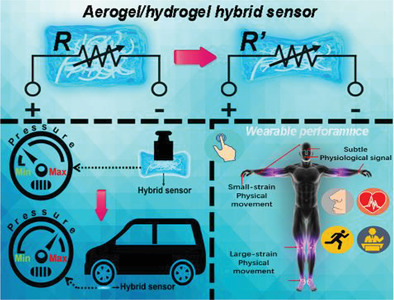
Achieving high sensitivity of pressure over a broad range covering both subtle and extremely high pressure remains a challenge due to the unsatisfactory structural stretchability and compressibility of the sensing materials. This work addresses this issue by designing a hybrid structured aerogel/hydrogel sensor by integrating a nanotube structured polypyrrole aerogel with a polyacrylamide hydrogel.
A Microfluidic Device to Fabricate One-Step Cell Bead-Laden Hydrogel Struts for Tissue Engineering
- First Published: 02 December 2021
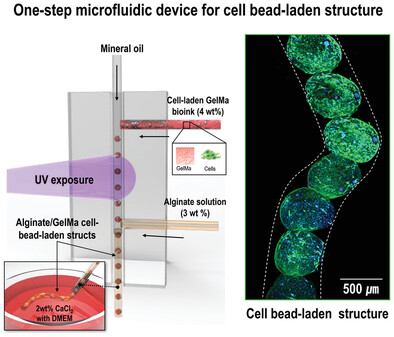
A microfluidic device with cell-laden methacrylated gelatin bioink and alginate as a matrix hydrogel is used to fabricate a functional hybrid structure laden with cell-aggregated microbeads. The hybrid structure with adipose stem cells results in significantly higher myogenesis in comparison to normally bioprinted struts.
Matching Charge Extraction Contact for Infrared PbS Colloidal Quantum Dot Solar Cells
- First Published: 02 December 2021
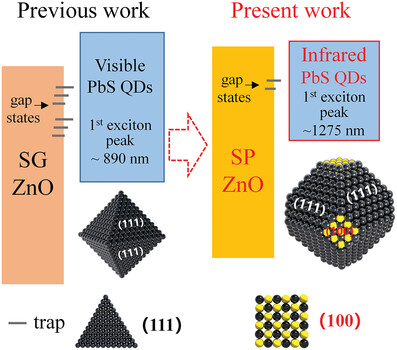
PbS colloidal quantum dot infrared solar cells can supplement silicon or perovskite solar cells. The energy level evolution of large size PbS quantum dots makes us reconsider the matching charge extraction contacts. The sputtered ZnO based device obtains a certified power conversion efficiency of over 10%, and the 1100 nm filtered efficiency achieves 1.23%.
Promoted NIR-II Fluorescence by Heteroatom-Inserted Rigid-Planar Cores for Monitoring Cell Therapy of Acute Lung Injury
- First Published: 04 December 2021
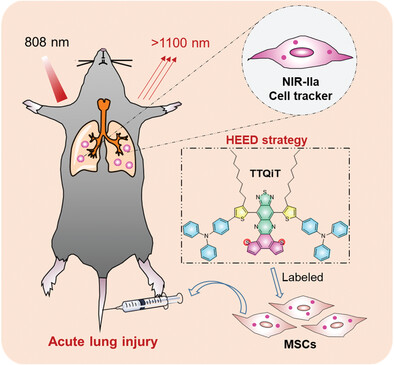
A heteroatom-inserted electron delocalization (HEED) strategy is facilitated to construct a series of second near-infrared (NIR-II) fluorophores. One representative AIEgen (TTQiT) displays a maximum emission wavelength beyond 1100 nm with desirable fluorescent brightness, which is successfully used as the NIR-IIa cell trackers to dynamically detect the homing of stem cells in mice with acute lung injury.
Boosting Alkaline Hydrogen and Oxygen Evolution Kinetic Process of Tungsten Disulfide-Based Heterostructures by Multi-Site Engineering
- First Published: 10 November 2021
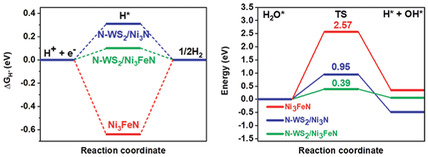
Density functional theory calculations in combination with experimental study are used to establish a multi-site engineering strategy for developing robust WS2-based hybrid electrocatalyst on mesoporous bimetallic nitride nanoarrays for bifunctional water splitting in base, requiring 84 mV to afford 10 mA cm−2 for hydrogen evolution reaction, and 240 mV at 100 mA cm−2 for oxygen evolution reaction with excellent large-current durability.
Ultrahigh Power Factor and Ultralow Thermal Conductivity at Room Temperature in PbSe/SnSe Superlattice: Role of Quantum-Well Effect
- First Published: 05 November 2021
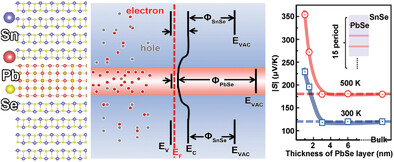
Reduced dimension is one of the effective strategies to modulate thermoelectric properties. This work successfully fabricated n-type PbSe/SnSe superlattices with quantum-well structure. Featured with ultrahigh power factor and ultralow thermal conductivity, the value of ZT at room temperature is significantly increased from 0.14 for PbSe single layer to 1.6 for PbSe/SnSe quantum-wells.
All-in-One: Multifunctional Hydrogel Accelerates Oxidative Diabetic Wound Healing through Timed-Release of Exosome and Fibroblast Growth Factor
- First Published: 17 November 2021

Using a convenient mixed injection, an HA@MnO2/FGF-2/Exos hydrogel dressing covering the diabetic wound tightly can be rapidly formed. The positive quaternary ammonium groups in the graft play a long-term antibacterial role. The MnO2/e-PL nanosheet acts as a nanoenzyme to catalyze the conversion from H2O2 to O2. The released ExosM2@miR-223 simulate long-lasting angiogenesis and the released FGF-2 accelerates epithelization efficiently.
Highly Selective Metal-Free Electrochemical Production of Hydrogen Peroxide on Functionalized Vertical Graphene Edges
- First Published: 05 November 2021

Metal-free edge-rich vertical graphene is synthesized and exhibits a superior H2O2 performance in alkaline media. It is unambiguously revealed that the edge-bound in-plane ether-type functional groups (COC) are active sites for H2O2 production. Moreover, a simple vacuum-based method is developed to effectively create a hydrophobic surface through hydrocarbon adsorption, which largely boosts H2O2 productivity.
Dynamic 1T-2H Mixed-Phase MoS2 Enables High-Performance Li-Organosulfide Battery
- First Published: 05 November 2021
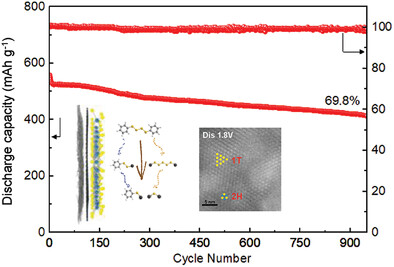
An organic–inorganic hybrid cathode consisting of 1T phase MoS2 grown on reduced graphene oxide mixed with carbon nanotubes and phenyl tetrasulfide (PTS) retains 69.8% of the theoretical capacity of PTS after 950 cycles in rechargeable lithium batteries. The cells also show high mass loadings and low electrolyte dependence. The dynamic 1T-2H mixed-phases MoS2 is critical for the improved performance.
Water-Soluble Nanoparticles with Twisted Double [7]Carbohelicene for Lysosome-Targeted Cancer Photodynamic Therapy
- First Published: 06 November 2021
![Water-Soluble Nanoparticles with Twisted Double [7]Carbohelicene for Lysosome-Targeted Cancer Photodynamic Therapy](/cms/asset/5396a833-c706-4f16-ad39-fb67a3f6d7e4/smll202105365-gra-0001-m.jpg)
Water-soluble nanoparticles containing twisted double [7]carbohelicene are prepared for lysosome-targeted cancer treatment involving both type I and II photodynamic therapy (PDT). This contribution reports a promising helicene-based phototherapeutic agent involving both type I and II PDT for organelle-targeted biotherapy.
Reusable Cavitand-Based Electrospun Membranes for the Removal of Polycyclic Aromatic Hydrocarbons from Water
- First Published: 09 November 2021
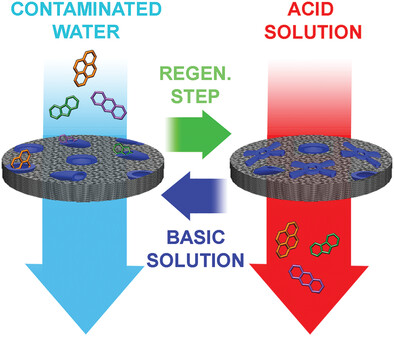
A new, regenerable polyacrylonitrile (PAN) based membrane for the removal of polycyclic aromatic hydrocarbons (PAHs) from water is presented. The membrane, functionalized with an ad hoc synthesized deep cavity cavitand, is easily produced by electrospinning and features excellent filter performances. The regeneration is obtained by pH-driven conformational vase-to-kite switch of the cavitand to release the included PAHs.
Uncommon Supramolecular Phosphorescence-Capturing Assembly Based on Cucurbit[8]uril-Mediated Molecular Folding for Near-Infrared Lysosome Imaging
- First Published: 06 November 2021
![Uncommon Supramolecular Phosphorescence-Capturing Assembly Based on Cucurbit[8]uril-Mediated Molecular Folding for Near-Infrared Lysosome Imaging](/cms/asset/b8bcb3ec-9a64-4ed0-bdc0-649ff6ab621c/smll202104514-gra-0001-m.jpg)
A high-efficiency supramolecular phosphorescence-capturing system with delayed near-infrared emission is successfully constructed via an efficient triplet to singlet Förster resonance energy transfer strategy, presenting ultrahigh antenna effects (352.9, 123.5) at a high donor/acceptor ratio (150:1, 300:1).
Porous Au–Ag Nanoparticles from Galvanic Replacement Applied as Single-Particle SERS Probe for Quantitative Monitoring
- First Published: 10 November 2021
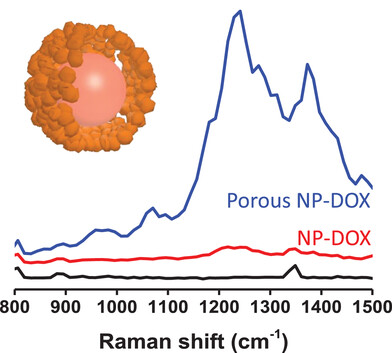
Novel porous Au–Ag nanoparticles are synthesized and applied as surface-enhanced Raman spectroscopy (SERS) probes. The tunable porous nanoparticles are dealloyed through galvanic replacement reaction from flexibly adjustable Au–Ag alloy nanoparticle precursors. The synthesized porous nanoparticles have extraordinary Raman enhancement due to their rough surface, large accessible surface area, and high density of “hot spots”, providing single-particle level SERS probes.
Control of Local Electronic Structure of Pd Single Atom Catalyst by Adsorbate Induction
- First Published: 12 November 2021
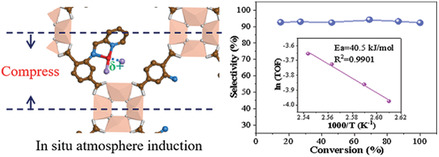
In situ adsorbate induced strategy at programmed temperature triggers lattice compress in metal–organic framework by reaction heat effect, and thus obtains electron-deficient Pd single atoms (Pd1δ+). This catalyst exhibits high intrinsic activity (activation energy (Ea) of 40.5 s−1) and selectivity of 93% with long-term stability in selective acetylene hydrogenation, correlating with reduced C2H4 desorption energy and activation barriers for hydrogenation.
CMOS-Compatible Electronic–Plasmonic Transducers Based on Plasmonic Tunnel Junctions and Schottky Diodes
- First Published: 05 November 2021

Highly efficient, electrically driven, and complementary metal–oxide–semiconductor (CMOS)-compatible electronic–plasmonic transducers are demonstrated by integration of Al–AlOX–Cu tunnel junctions, Cu plasmonic waveguides, and Si–Cu Schottky diodes. Plasmonic signals are generated by applying voltages across the tunnel junctions, which then propagate along Cu plasmonic waveguides, and are detected with the Schottky diodes.
Sculpting the Plasmonic Responses of Nanoparticles by Directed Electron Beam Irradiation
- First Published: 10 November 2021
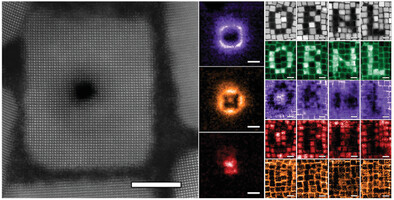
Nanoparticles are directly sculpted using a converged electron beam in a scanning transmission electron microscope. The controlled modification at the nano and atomic scales induces changes to the plasmonic behavior of individual or collections of nanoparticles in both the spatial and spectral domains, which are observed in situ with monochromated electron energy loss spectroscopy.
Unveiling the Role and Mechanism of Nb Doping and In Situ Carbon Coating on Improving Lithium-Ion Storage Characteristics of Rod-Like Morphology FeF3·0.33H2O
- First Published: 16 November 2021
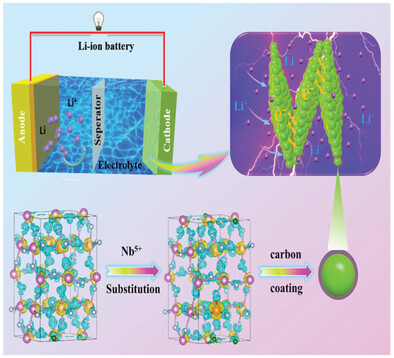
An omni-directional ion/electron transmit network and a robust 3D composite structure of Nb-FeF3·0.33H2O@C are constructed synchronously by a ternary-treatment strategy of Nb-substitution, rod-like mesoporous architecture and conformal carbon coating, which can satisfactorily promote reaction kinetics, adaptability of volume expansion, and relief of voltage hysteresis, thus exhibiting excellent rate capability, ultrahigh discharge capacity, and long cycling life.
Edge-Mediated Annihilation of Vacancy Clusters in Monolayer Molybdenum Diselenide (MoSe2) under Electron Beam Irradiation
- First Published: 16 November 2021
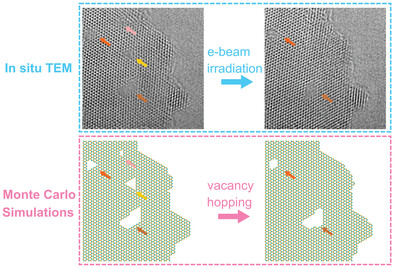
Understanding defect dynamics in 2D materials is critical for tailoring their properties through defect engineering. Herein, annihilation of vacancy clusters in monolayer molybdenum diselenide under electron beam irradiation is reported and found to be energetically favorable, with electron beam and pre-stress facilitating the barrier-hopping. The findings expand the capability of electron beam for manipulating defects in 2D materials.
Interface-Induced Electrocatalytic Enhancement of CO2-to-Formate Conversion on Heterostructured Bismuth-Based Catalysts
- First Published: 16 November 2021

The heterostructured Bi2S3-Bi2O3 nanosheets with substantial amount of interface are designed, which demonstrate the enhanced CO2 electroreduction performance. The fast-interfacial charge transfer induced by the electronic interaction at the interface, together with the increased number of active sites and the improved CO2 adsorption ability, collectively contribute to the improved electrocatalytic performance.
Editor's Choice
White Light Afterglow in Carbon Dots Achieved via Synergy between the Room-Temperature Phosphorescence and the Delayed Fluorescence
- First Published: 17 November 2021
Reconfiguration of Amorphous Complex Oxides: A Route to a Broad Range of Assembly Phenomena, Hybrid Materials, and Novel Functionalities
- First Published: 16 November 2021
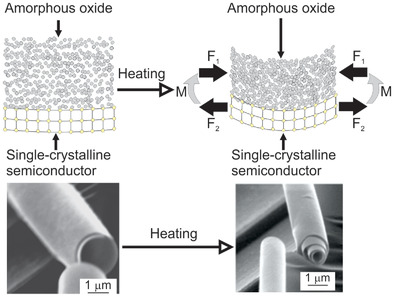
Metastable amorphous oxides/single-crystalline semiconductor nanosheets assemble into 3D shapes via reconfiguration of the atomic structure of the oxide during heat treatment. For heating parameters leading to densification of the amorphous film, axial forces (F1, F2) and a torque (M) drive bending of the nanosheet perpendicularly to its surface. The mechanism allows fabrication of strained superlattices and strain-engineering of complex oxides.
Hierarchical Atomic Layer Deposited V2O5 on 3D Printed Nanocarbon Electrodes for High-Performance Aqueous Zinc-Ion Batteries
- First Published: 10 November 2021
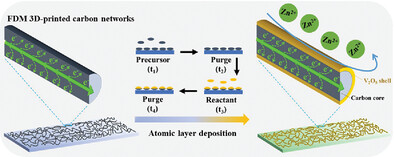
Formation of 3D electroactive architectures with porous morphology is getting growing attention in energy storage community. Such 3D architecture can be constructed by the integration of fused deposition modeling (FDM) 3D printing with atomic layer deposition (ALD). This enables the hierarchical fabrication of core–shell structured V2O5 cathodes for Zn2+ storage, and enriches the advanced battery electrode manufacturing techniques.
Wide Dynamic Range Thermometer Based on Luminescent Optical Cavities in Ga2O3:Cr Nanowires
- First Published: 12 November 2021
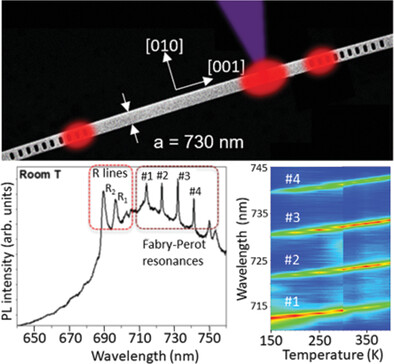
A novel approach for multimodal remote thermometry based on Fabry–Perot optical microcavities built in β-Ga2O3:Cr nanowires is reported. The luminescent and interferometric thermometer combines optical features of the Cr3+ luminescence and resonances resulting from spatial confinement of light. It presents micron-scale dimensions, temperature precision of around 1 K, and operation in the 150–550 K temperature range.
Polypyrrole Serving as Multifunctional Surface Modifier for Photoanode Enables Efficient Photoelectrochemical Water Oxidation
- First Published: 05 November 2021
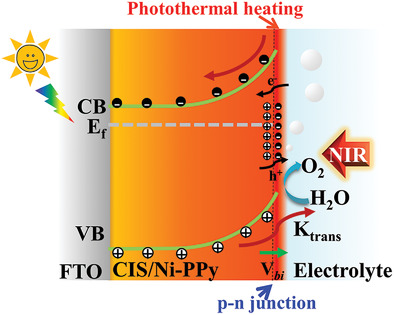
Ni incorporated polypyrrole (PPy) serves as a multifunctional surface modifier to enhance the photoelectrochemical (PEC) performance of CdIn2S4 (CIS) photoanode. Due to the synergistic effect of photothermal effect from PPy, catalysis effect from Ni incorporation, and the formation of CIS/Ni-PPy p–n junction, the optimum composite photoanode exhibits remarkably enhanced PEC performance under AM 1.5G sunlight combined with near-infrared light irradiation.
Integrated 3D Open Network of Interconnected Bismuthene Arrays for Energy-Efficient and Electrosynthesis-Assisted Electrocatalytic CO2 Reduction
- First Published: 05 November 2021
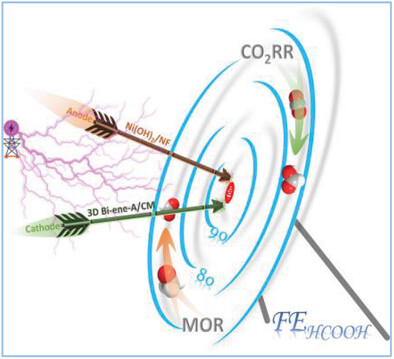
An integrated 3D open network of interconnected bismuthene arrays is constructed, of which the distinctive superstructure leads to a good CO2 reduction reaction (CO2RR) performance for stable formate production with high Faradaic efficiency and current density. Furthermore, a unique two-electrode electrolyzer coupling CO2RR with methanol oxidation reaction is constructed to reduce energy consumption yet achieve value-added pair-electrosynthesis of formate.
Programmable Self-Regulation with Wrinkled Hydrogels and Plasmonic Nanoparticle Lattices
- First Published: 09 November 2021
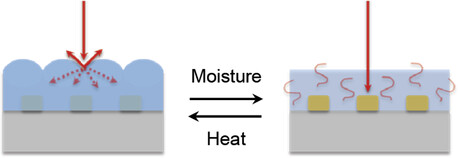
A self-regulating platform combining hydrogel microwrinkles and plasmonic nanoparticle lattices can demonstrate programmable regulation with tunable timescales. The system couples the dynamic optical properties of the wrinkle patterns with moisture-responsive mechanical actuation that can be controlled by the photothermal effect of the plasmonic lattices.
A Multiscale Strategy to Construct Cobalt Nanoparticles Confined within Hierarchical Carbon Nanofibers for Efficient CO2 Electroreduction
- First Published: 25 November 2021
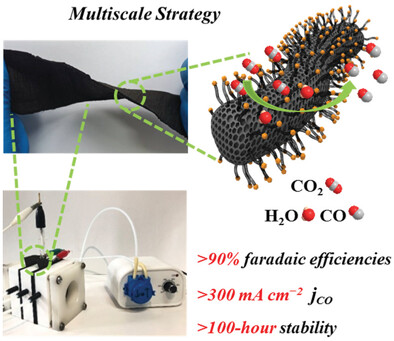
A conductive, flexible, and self-supporting Co/CNT/HNCF membrane is constructed via a multiscale strategy for the efficient electrochemical reduction of CO2. This membrane can be directly used as gas-diffusion electrode in electrolysis, which produces CO with >90% faradaic efficiencies as well as >300 mA cm−2 partial current densities for at least 100-h stability.
Grafting Hypercrosslinked Polymers on TiO2 Surface for Anchoring Ultrafine Pd Nanoparticles: Dramatically Enhanced Efficiency and Selectivity toward Photocatalytic Reduction of CO2 to CH4
- First Published: 26 November 2021
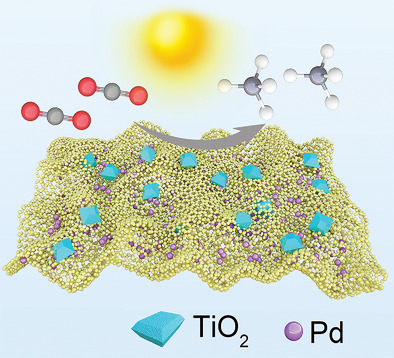
Here, a bimetal-containing photocatalyst is reported by immobilizing TiO2 and Pd nanoparticles on the hypercrosslinked polymers. The designed catalyst exhibits excellent photocatalytic CO2 conversion efficiency with a high CH4 production rate of 237.4 μmol g−1 h−1 and a remarkable selectivity for more than 99.9%. This work provides a strategy to construct a porous polymers-based semiconductor toward efficient CO2 photoconversion.
Nanovaccines Mediated Subcutis-to-Intestine Cascade for Improved Protection against Intestinal Infections
- First Published: 25 November 2021
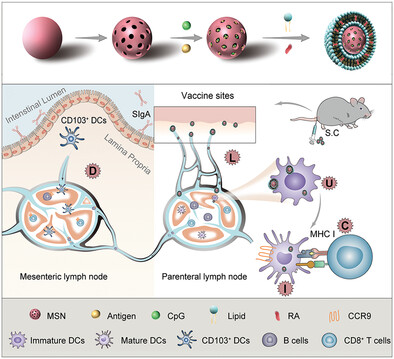
This work reports the rational design of a subcutis-to-intestine cascade for navigating nanovaccines to simultaneously activate cellular and mucosal immune responses. By processing the cascade in vivo, the subcutaneously injected nanovaccines significantly improve protection against intestinal infections.




